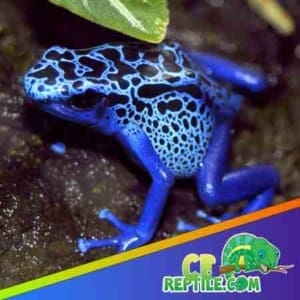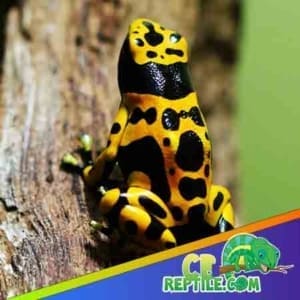Raising Baby Captive-Bred Poison Dart Frogs



Baby poison dart frogs for sale are tiny, active, and endlessly fascinating. They also rely on precise husbandry—stable humidity, safe temperatures, gentle UVB, and a nutrient-dense micro-prey diet. This step-by-step guide focuses on what changes when you’re raising babies versus adults, so your little jewels grow steadily, eat eagerly, and display confident, natural behaviors in a lush, planted habitat.
Baby Basics: What’s Different From Adult Care?
Neonates and juveniles have faster metabolisms, smaller prey requirements, and heightened sensitivity to environmental swings. Your goals: provide stable warmth (not heat), consistently high humidity with light daily cycling, abundant plant cover for security, and frequent, appropriately sized feedings. When in doubt, prioritize environmental stability over constant tinkering; frogs thrive on predictable rhythms.
Starter Habitat & Tank Setup
A front-opening glass vivarium in the 18″ cube range works well for a pair of juveniles, though larger spaces stabilize climate even better. Build bioactive from the bottom up: a drainage layer (LECA or false bottom) beneath a mesh barrier; a moisture-retentive substrate blend; then generous leaf litter for shelter and foraging. Seed with springtails and dwarf isopods to manage waste and provide incidental snacks between feedings.
- Day temp: ~72–78°F (22–26°C)
- Night drop: ~2–6°F (1–3°C)
- Humidity: 75–100% with gentle day/night cycling
- Photoperiod: 10–12 hours (timer-controlled)
- Digital thermometer & hygrometer with probes
- Plant-friendly LED plus a low-output UVB tube
- Mister (manual or automated) & ultrasonic fogger
- Timers or a humidity controller for consistent cycles
Humidity: High, Stable, and Fresh
Because amphibian skin exchanges water and electrolytes readily, babies are especially sensitive to dry spells. Aim for high humidity anchored by dense planting and leaf litter, then add light daily cycling so the enclosure never feels stagnant. After lights turn on, allow a brief, mild drying period; later, restore moisture with misting or a short fogger session. Keep air moving across the top vents so the lower levels remain humid but oxygen-rich.
Using a Fogger the Right Way
A cool-mist ultrasonic fogger is a powerful stabilizer—when used in moderation. Run it on a timer or humidistat in brief cycles (10–20 minutes) aimed across foliage, not directly at resting areas. Always use RO or distilled water to prevent mineral residue, and clean the reservoir and lines regularly to avoid biofilm. Pair fogging with fine misting that leaves droplets on leaves and bromeliad cups for natural drinking behavior.
Temperature: Warm Enough, Never Hot
Appetite and digestion follow temperature. Keep daytime readings in the mid-70s°F; babies can crash quickly if overheated, so avoid domed heat fixtures and direct sunlight. If your room runs warm, move the enclosure away from electronics, increase ventilation across the lid, or cool the room itself. A small nighttime dip is fine—just keep humidity high so skin stays hydrated.
UVB & Lighting for Juveniles
Even under dense canopy, trace UVB reaches the forest floor. In captivity, a gentle UVB tube can support natural vitamin D3 synthesis and overall vitality. Create a gradient by mounting UVB above the screen and providing shaded retreats under large leaves or cork; frogs should choose whether to bask. Pair UVB with a plant LED for photosynthesis, and lock the photoperiod to a timer for consistent circadian cues.
Baby Diet & Supplementation
Feed small, moving prey sized to the frog’s mouth. A practical rotation for juveniles includes Drosophila melanogaster fruit flies, springtails, pinhead/micro crickets, and occasional tiny roach nymphs. Offer modest portions 5–6 days per week, aiming for what they’ll finish within 15–30 minutes. Watch body condition: smooth, rounded flanks without bloat and eager hunting during feeding windows signal you’re on track.
- Feed insects dark leafy greens and a high-quality dry gut-load 24 hours before use.
- Keep feeder cultures clean; refresh media routinely for nutrient-dense yields.
- Provide moisture gels or slices of squash for hydrated prey.
- Dust most feedings with calcium; rotate a multivitamin 1–2× weekly.
- If you provide UVB, use D3-free calcium regularly and a D3 product less often.
- No UVB? Make sure your schedule includes D3 for proper calcium metabolism.
Planting & Hardscape: Security = Visibility
Babies show themselves more when they feel safe. Build layered cover with pothos, philodendron, peperomia, ferns, and bromeliads; add cork flats, seed pods, and branches for hides and leaf axils. The result is a visually rich habitat that buffers humidity and encourages bold exploration—and better viewing—once the frogs realize there are safe retreats everywhere.
Water Quality & Cleanliness
Amphibian skin absorbs contaminants easily. Use dechlorinated, RO, or distilled water for misting and fogging, refresh bromeliad cups frequently, and remove uneaten insects after each feeding. With robust planting and an active cleanup crew, you’ll handle mostly light maintenance—spot cleaning and pruning—rather than disruptive tear-downs.
Daily & Weekly Routines for Baby Success
- Verify temp/humidity readings with a quick look at your probes.
- Run a short mist or fogger cycle as needed; avoid saturation.
- Feed small portions and remove leftovers after 20–30 minutes.
- Observe behavior: posture, breathing, activity, and hunting response.
- Log highs/lows and adjust timers if seasons shift household climate.
- Prune plants to keep airflow, rinse leaves if pow
